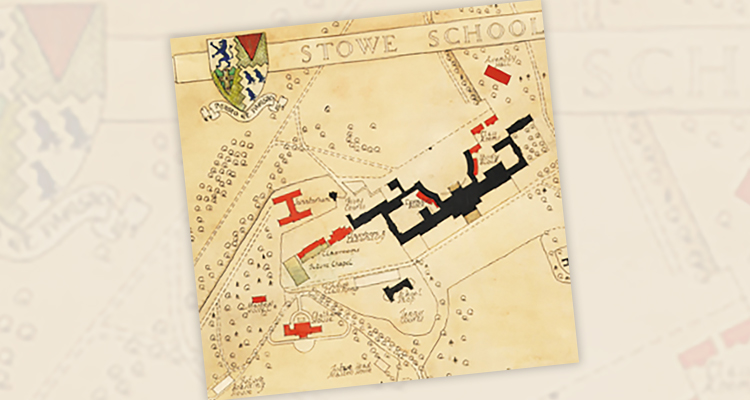In December 1920, soon after the First World War ended in 1918, Edward Henry Montauban (1870-1954) formed a committee of the Independent Association of Preparatory Schools to found a new leading public school to meet demand for places.
Previously Head at Dover College Junior School, Montauban owned The Hall School, Hampstead from 1909 to 1920. He was a ‘character’ whose twinkle in the eye could change “in a split second to an ominous frown for the terror of juvenile malefactors”. He had “boundless tolerance and sheer, uplifting faith”, according to a former pupil.
The committee was unusual. It included the Heads of Charterhouse, Marlborough and Oundle, for whom a new school would be a rival. It faced two major challenges: finding a site and raising funds.
Montauban proposed Stowe. At the auction in July 1921, he bid £30,000 but Stowe was sold for £50,000 to Harry Shaw of Beenham Court, Newbury.
Shaw said he intended to give Stowe to the nation, but this failed and in December 1921 he offered to give it to Montauban’s committee – as long as they could raise £225,000 to endow and convert it. Montauban hired Brookfield House in Buckingham to show Stowe to potential investors and parents. The Times ran two negative articles, but the reply from Mrs Croom-Johnson enthusiastically explained the advantages of a new school at Stowe. From April 1922, her husband was Chair of the Provisional Committee with Montauban as Secretary.
Time was running out. In July 1922, Shaw announced he would sell Stowe, for which he had reportedly not paid in full. The Provisional Committee still lacked the funds, so Stowe was to be auctioned for demolition on 11 October 1922.
Stowe was saved by a different committee, chaired by Lord Gisborough. It included Sir Charles King-Harman, a former Governor of Sierra Leone and Cyprus, Dr David, a former Headmaster of Rugby, Dr Burroughs, later bishop of Ripon and Field Marshall Sir William Robertson.
Its secretary was the energetic Rev. Percy Warrington, rector of Monkton Combe, the greatest founder of schools in the 20th century and also secretary of the Martyrs Memorial Trust and Church of England Trust. Within an hour of hearing of its sale, he unilaterally sent a letter offering to buy Stowe and visited four days later. By 29 September 1922, Warrington, aged 32, negotiated for the company owning Wrekin College, a school he acquired in 1921, to buy Stowe for £34,500.
In 1922 a combined committee appointed JF Roxburgh as the first Headmaster and Clough Williams-Ellis as architect. Clough was to convert the vast house, with supposedly over 400 rooms and one bathroom, into a boarding school for 200. Two Houses, Bruce and Temple, opened on 11 May 1923 and two more, Grenville and Chandos, the following term. Clough had shown his interest in Stowe in his purchase of the Grand Avenue and his Spectator letter of 23 July 1921, suggesting Stowe’s use for education “with influence over the destinies” of the country.
In the first year, some thirty miles of plumbing and electrical wiring were installed. At first all accommodation was in the existing Main House and outbuildings. These provided classrooms, laboratories, dining rooms, changing rooms, a Chapel and dormitories. New separate buildings, by early 1925, included more classrooms and laboratories, squash and fives courts, a gymnasium and sanatorium, followed by Chatham House and a new Chapel in 1927.
Within three years Montauban’s plan was realised. However, its execution was a collaborative effort by Warrington and many others who shared his vision for Stowe as the new school.
Michael Bevington (Former staff 1978–2019)

